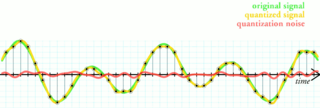Forth is a procedural, concatenative, stack-oriented programming language and interactive development environment designed by Charles H. "Chuck" Moore and first used by other programmers in 1970. Although not an acronym, the language's name in its early years was often spelled in all capital letters as FORTH. The FORTH-79 and FORTH-83 implementations, which were not written by Moore, became de facto standards, and an official standardization of the language was published in 1994 as ANS Forth. A wide range of Forth derivatives existed before and after ANS Forth. The free software Gforth implementation is actively maintained, as are several commercially supported systems.

sed is a Unix utility that parses and transforms text, using a simple, compact programming language. It was developed from 1973 to 1974 by Lee E. McMahon of Bell Labs, and is available today for most operating systems. sed was based on the scripting features of the interactive editor ed and the earlier qed. It was one of the earliest tools to support regular expressions, and remains in use for text processing, most notably with the substitution command. Popular alternative tools for plaintext string manipulation and "stream editing" include AWK and Perl.
troff, short for "typesetter roff", is the major component of a document processing system developed by Bell Labs for the Unix operating system. troff and the related nroff were both developed from the original roff.
In logic, mathematics, and computer science, arity is the number of arguments or operands taken by a function, operation or relation. In mathematics, arity may also be called rank, but this word can have many other meanings. In logic and philosophy, arity may also be called adicity and degree. In linguistics, it is usually named valency.
In software development, Make is a build automation tool that builds executable programs and libraries from source code by reading files called makefiles which specify how to derive the target program. Though integrated development environments and language-specific compiler features can also be used to manage a build process, Make remains widely used, especially in Unix and Unix-like operating systems.
The C preprocessor is the macro preprocessor for several computer programming languages, such as C, Objective-C, C++, and a variety of Fortran languages. The preprocessor provides inclusion of header files, macro expansions, conditional compilation, and line control.

Quantization, in mathematics and digital signal processing, is the process of mapping input values from a large set to output values in a (countable) smaller set, often with a finite number of elements. Rounding and truncation are typical examples of quantization processes. Quantization is involved to some degree in nearly all digital signal processing, as the process of representing a signal in digital form ordinarily involves rounding. Quantization also forms the core of essentially all lossy compression algorithms.
The printf family of functions in the C programming language are a set of functions that take a format string as input among a variable sized list of other values and produce as output a string that corresponds to the format specifier and given input values. The string is written in a simple template language: characters are usually copied literally into the function's output, but format specifiers, which start with a % character, indicate the location and method to translate a piece of data to characters. The design has been copied to expose similar functionality in other programming languages.
xargs is a command on Unix and most Unix-like operating systems used to build and execute commands from standard input. It converts input from standard input into arguments to a command.
m4 is a general-purpose macro processor included in most Unix-like operating systems, and is a component of the POSIX standard.
bc, for basic calculator, is "an arbitrary-precision calculator language" with syntax similar to the C programming language. bc is typically used as either a mathematical scripting language or as an interactive mathematical shell.
Code injection is the exploitation of a computer bug that is caused by processing invalid data. The injection is used by an attacker to introduce code into a vulnerable computer program and change the course of execution. The result of successful code injection can be disastrous, for example, by allowing computer viruses or computer worms to propagate.
FOCAL is an interactive interpreted programming language based on JOSS and mostly used on Digital Equipment Corporation (DEC) Programmed Data Processor (PDP) series machines.

Mathomatic is a free, portable, general-purpose computer algebra system (CAS) that can symbolically solve, simplify, combine, and compare algebraic equations, and can perform complex number, modular, and polynomial arithmetic, along with standard arithmetic. It does some symbolic calculus (derivative, extrema, Taylor series, and polynomial integration and Laplace transforms), numerical integration, and handles all elementary algebra except logarithms. Trigonometric functions can be entered and manipulated using complex exponentials, with the GNU m4 preprocessor. Not currently implemented are general functions like f(x), arbitrary-precision and interval arithmetic, and matrices.
A scanf format string is a control parameter used in various functions to specify the layout of an input string. The functions can then divide the string and translate into values of appropriate data types. String scanning functions are often supplied in standard libraries. Scanf is a function that reads formatted data from the standard input string, which is usually the keyboard and writes the results whenever called in the specified arguments.
The Mouse programming language is a small computer programming language developed by Dr. Peter Grogono in the late 1970s and early 1980s. It was developed as an extension of an earlier language called MUSYS, which was used to control digital and analog devices in an electronic music studio.
The PDP-11 architecture is a 16-bit CISC instruction set architecture (ISA) developed by Digital Equipment Corporation (DEC). It is implemented by central processing units (CPUs) and microprocessors used in PDP-11 minicomputers. It was in wide use during the 1970s, but was eventually overshadowed by the more powerful VAX architecture in the 1980s.

Rexx is a programming language that can be interpreted or compiled. It was developed at IBM by Mike Cowlishaw. It is a structured, high-level programming language designed for ease of learning and reading. Proprietary and open source Rexx interpreters exist for a wide range of computing platforms; compilers exist for IBM mainframe computers.
In computer programming, string interpolation is the process of evaluating a string literal containing one or more placeholders, yielding a result in which the placeholders are replaced with their corresponding values. It is a form of simple template processing or, in formal terms, a form of quasi-quotation. The placeholder may be a variable name, or in some languages an arbitrary expression, in either case evaluated in the current context.

jq is a very high-level lexically scoped functional programming language in which every JSON value is a constant. jq supports backtracking and managing indefinitely long streams of JSON data. It is related to the Icon and Haskell programming languages. The language supports a namespace-based module system and has some support for closures. In particular, functions and functional expressions can be used as parameters of other functions.







